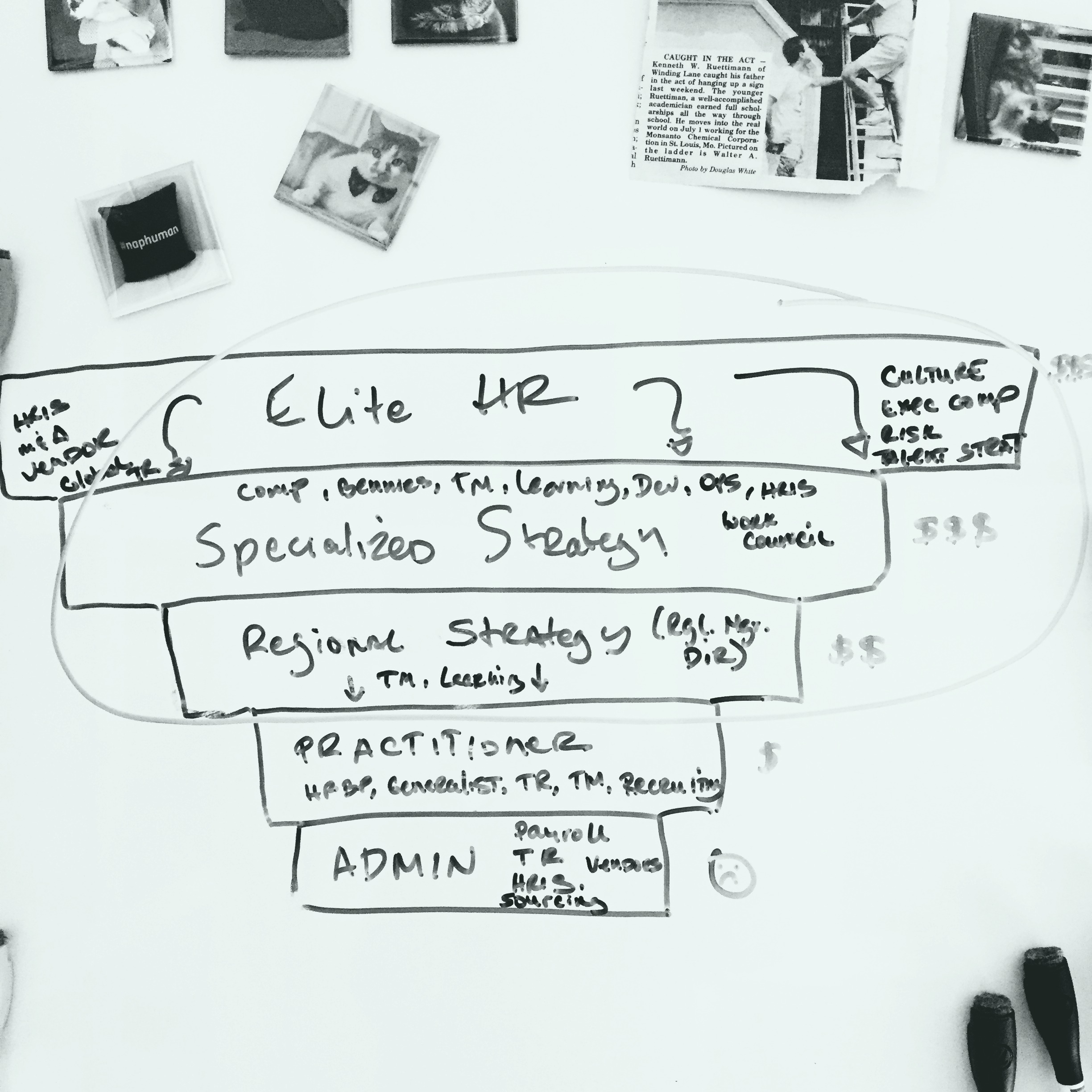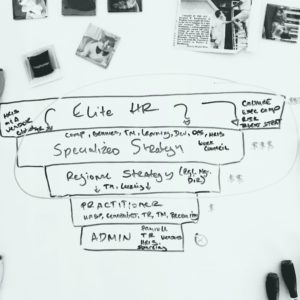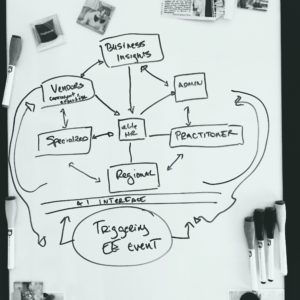
Go ahead and try to explain the current state and future state of HR in less than 50 words.
(I’ll wait. It’s not easy.)
In years past, I told people that HR is an inverted pyramid. There’s value at the top and bottom, but it turns out that fewer people are doing more and more of the valuable work. The rest is automated and outsourced.
On the bottom of the pyramid, it’s all about administrative processes. It’s low-value work to some people; however, I think it’s necessary work. You don’t have HR if you can’t pay people on time.
The second block is the part of the pyramid that delivers on HR’s value proposition. You’ll find recruiters and business partners who get things done in the trenches. It isn’t a very profitable part of the HR value chain, and it’s full of HR people making mistakes and demonstrating bad judgment masked in the confidence of undergraduate degrees and HR certifications. But it gets the job done.
The third part of the pyramid is where you see strategy come to life. HR business partners are promoted to Regional Managers and Directors, and you get talent acquisition professionals who think holistically instead of focusing on open requisitions. It’s still messy, but it’s informed chaos. This group spends money on consultants and vendors, too.
The fourth section is a playground for a lot of consultants and technical firms. That’s the particular segment of the HR pyramid where people-related decisions are made by internal experts who, allegedly, know what they’re doing. But most of these “internal experts” have favored vendors and providers who give guidance and sell technology. This is where I used to make most of my money.
The upper block of the pyramid is reserved for what consultants call, “Elite HR.” Not every HR department has an elite offering, but this is where global decisions are made in conjunction with the business imperatives of an organization. It’s a goldmine for consultants when they have access to it, but you have to be invited to play. And very few people in HR will ever work at this level, including your CHRO.
The way I’ve described HR just now hasn’t changed much in the past 25 years. But I think the future of HR looks different, and I’ve been drawing something else, these days.
The future of HR isn’t human resources. It’s all about the employee’s experience and triggering event. Is the worker contingent? Full-time? Working from home? Working abroad? Is she sick? Is her coworker bullying her?
An employee will enter their request into a Siri-like AI interface. Maybe it’s an intranet. Maybe it’s an app on their phone that can confirm an identity based on location and bio-identity markers. The interface will get to work and pull the best solutions from all facets of HR — plus outside of HR, as needed — to deliver an “answer” or solution to the worker via her device-of-choice.
But the future of HR isn’t just about on-demand service delivery. Behind the interface, those individual HR groups will work together proactively to design plans, programs and solutions. Each unit will validate the work of the other units, and there will be checks and balances to approve the quality and appropriateness. A solution will be delivered to employees through an interface (first choice) or in some sort of human form (second choice). A record of that transaction will be stored in a limitless personnel file in the cloud.
But here’s the kicker: When I try to explain the future of HR in less than fifty words, I tell people that human resources will be less and less human each day. HR departments and constituencies will evolve into blocks of knowledge, not people. Our HR “systems” will learn lessons from previous HR endeavors, and they’ll do automated premortems to calculate risks and overcome mistakes of the past. HR will use best practices from other industries and organizations, and it will devise HR strategies and programs that are customized to each individual worker without a lot of human messiness.
So, in short, the future of HR doesn’t have a lot of room for humans except in that elite core where critical thinking, creativity, and transparency are required to keep the whole thing running in an ethical way.
Modern day HR professionals laugh at me when I tell them that their time is limited, but they shouldn’t be laughing. Or they call me Henny Penny/Chicken Little and ask for easy solutions so they can transfer their knowledge to something else.
I think there are two ways you can play it. You can be a coal miner and get really mad when your skills are no longer in demand, or get competitive and try to push yourself into that elite echelon.
Here’s what I know: You can do anything. If you work in HR, study language, poetry, and history. Be passionate about stories so you can advocate for workers as needed. Learn to spot patterns and trends so you can get better at predicting the gulf between enterprise initiatives and human behavior.
And learn a little about other future-forward HR delivery models. I’m not sure my predictions will come true, but if you begin to listen to people talk about the future of HR in aggregate, it becomes pretty clear that your time is limited.


I very much agree with your blog, Laurie. With respect to the top tier, PSYCHOLOGY TODAY published our research on the “Journey” CHROs take from being head of a business function to being perceived as a valued business adviser to the CEO. Glad to send it to you if you email me at lstybel@stybelpeabody.com
My pyramid points in the other way, and the thought remains incomplete as presented. https://wickedgoodhr.com/2017/01/30/all-things-being-equal/
Tier I is Transactional
Tier II is Tactical
Tier III is Transformation
Your depiction is spot on from a larger organization/global/ total HR profession perspective. My pond of usually 100 employees is much shallower.
I do have a generalist and between the two of us, she is absorbed in within the 55% transactional details. I should finish telling more of my tales of triangles.